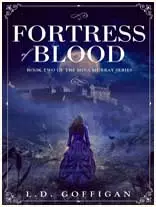What is The Primary Feature of Nonfiction?

It is nonfiction writing, powerful storytelling that engages the reader in real-world experience, facts, and information. Fiction, however, takes readers into other worlds of imagination; nonfiction, on the other hand, gains strength from the real world, presenting actual events, ideas, and insights dramatically and systematically. But what makes nonfiction writing different, and what is its major emphasis?
The Primary Feature of Nonfiction Writing
Nonfiction differs from fiction in that it emphasizes factual content. Fiction relies on imagination and creative ideas, while nonfiction refers to the actual real world: it gives an account of real events, people, places, or phenomena. This could refer to everything from biographies and memoirs to self-help manuals, history books, and journalistic works. The essence of nonfiction is grounded in truth, accuracy, and the goal of informing or educating the reader.
Nonfiction Writing Vice Fiction Writing
Yet, the most evident difference between fiction and nonfiction centers on the fact that fiction exists on an imaginary and non-factual basis:
Objective and Aim: Nonfiction writing is mainly designed to provide information. Thus, it will not only inform but also persuade, explain, or analyze. Fiction tends to entertain, stir emotion, or tell a story using imagination.
Structure and Style: Nonfiction writing may either be very structured or more loose, depending on the type; for example, academic papers, historical texts, and biographies often precede a rigid structure and rely heavily on evidence and citations. Creative nonfiction, such as personal essays or memoirs, allows for more narrative freedom while retaining ties to factual events.
Trustworthiness: The earmark of nonfiction is a relation to truth. That is, readers should expect to find accurate or "truthful" information in nonfiction literature regarding the subject matter. Although art plays an important role in fiction, the author creates the freedom to bend reality or completely forget it in the name of creating a plot.
Types of Nonfiction Writing
There are several types of nonfiction writing. They all serve different purposes but have in common the central element of reality:
1. Creative Nonfiction Writing.
Although creative nonfiction lies between fact and art, it allows writers to tell their stories through lived experience, anecdotes, and thoughts, while still holding to the central truth that characterizes nonfiction. This might be:
Memoirs: Personal narratives that reflect actual life events.
Essays: Often subjective "point of view" accounts that focus on some aspect, event, or argument.
Personal Narratives: Stories down through the life or experience of a person related to some specific type of event or emotional journey.
2. Journalism and Reporting:
This journalistic nonfiction writing includes a wide range of articles, including news stories, investigative reports, interviews, and opinion pieces. As in any other journalism, the aim of informing and educating the public about real events, issues, and developments is what journalism does.
3. Biography and Autobiography:
Biography tells the life story of another person, while autobiography is written by the person. Both of these works strive to be truthful and somewhat complete about a person's life, presenting an understanding of that person's experiences, obstacles, and triumphs.
4. Self-Help and How-To Books
The self-help books written this way are one of the most commonly known kinds of non-fiction. These books are meant to give a practical approach, pointers, and strategies to help someone improve specific areas in their lives, such as personal issues or seeking success in their careers.
5. History and Documentaries.
The historical nonfiction writing intends to record past events with any detail through research, scrutiny, and sometimes eyewitness accounts. Documentaries also fall under this category, being fact-based accounts on certain historical events, usually with added interviews, images, and archival footage.
The Impact of Nonfiction:
Nonfiction writing possesses a unique power that is hard to define within the realm of the literary. It informs the reader, but does more than that; it connects the reader to the reality around him. Here are some other factors that make nonfiction writing quite powerful:
1. Information.
Nonfiction writing is a bridge to the world. It holds the evidence, facts, and viewpoints that move the reader closer to seeing the reality dimension of the world before him. Whether in learning history, science, or personal growth, nonfiction writing is the door to learning.
2. Connection to Reality.
It identifies reality in issues or experiences that are real. The matters covered include those that are perhaps not considered from their perspectives, underrepresented, or those that will raise awareness regarding social issues or provoke change. Nonfiction work on issues like climate change is known to influence both public opinion and policy.
3. Inside the Mind of the Writer.
In using creative nonfiction writing, the finding of one's voice involves borrowing one's own experiences and thoughts to pull the reader into the level of emotion. By revealing stories and feelings in real life, writers succeed in becoming relatable and understandable to their audiences.
Conclusions
The primary feature of nonfiction writing is that it describes truth and reality in storytelling, factual report-writing, or personal reflections. Except for some limited artistic freedom in creative nonfiction writing, the basis of all nonfiction writing remains grounded in reality.
limited Time offer
- 00
- 00
- 2





